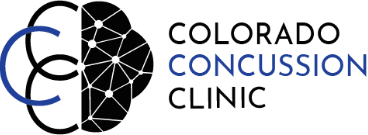One of the most prominent symptoms of concussion is headache. After a concussive injury headaches are often the main symptom that impacts one’s daily functioning. One moment you might be effectively managing your pain and then the next thing you know you have a significant headache that causes you to stop what you are doing. Patients often remark, “It just came out of nowhere!” . Usually, however, there is some kind of trigger that you are unaware of, causing the significant increase in head pain.
While some triggers are more obvious, such as working for hours, others are less so. Some triggers can be as simple as looking at a screen for too long, stepping outside without sunglasses, having the TV on in the background, overdoing it with physical exercise, etc.. The best way to understand your personal headache triggers is to monitor your symptoms, record your daily activities and any increase in symptoms you notice. Everyone is different, some symptoms may increase immediately at the onset or just after a trigger, but some symptoms may increase hours/days later. Keep an Activity & Symptom Log.
For Example:
Gardening outside from 1:00 pm - 4:00 pm
… difficulty sleeping and a massive headache the next morning
Went to the Costo
… significant increase in headache beginning while at the store and continuing to increase on the way home
Once you have a log of your activities and symptoms, you can begin to find the patterns and identify your personal triggers.
In the gardening example, the triggers may be sunlight, heat, and/or physical activity (e.g., bending down and standing up). Next time you garden, plan ahead and try to mitigate these triggers by wearing sunglasses and/or a hat, taking frequent breaks inside, and bringing a chair to sit down in instead of standing or kneeling.
In the Costo example, the triggers may be background noise (e.g., people talking or music playing), fluorescent lighting, or trying to remember a long grocery list in your head. Next time you take a trip to Costo, plan ahead and try to mitigate these triggers by wearing a hat to shield your eyes from the fluorescent lights, wearing earplugs, and writing everything down in a grocery list organized by section in the store.
The ultimate goal early in concussion recovery is to reduce significant symptoms such as headaches. When one is in a state of high pain and intense headache they are unable to complete daily activities (understandably so!). This is disruptive to one's life, and is also counterproductive to recovery. Once you understand your triggers, you will be able to hopefully reduce the frequency and intensity of your headaches, allowing the brain more time to heal your concussive injury.
Hannah Beach MS CCC-SLP

